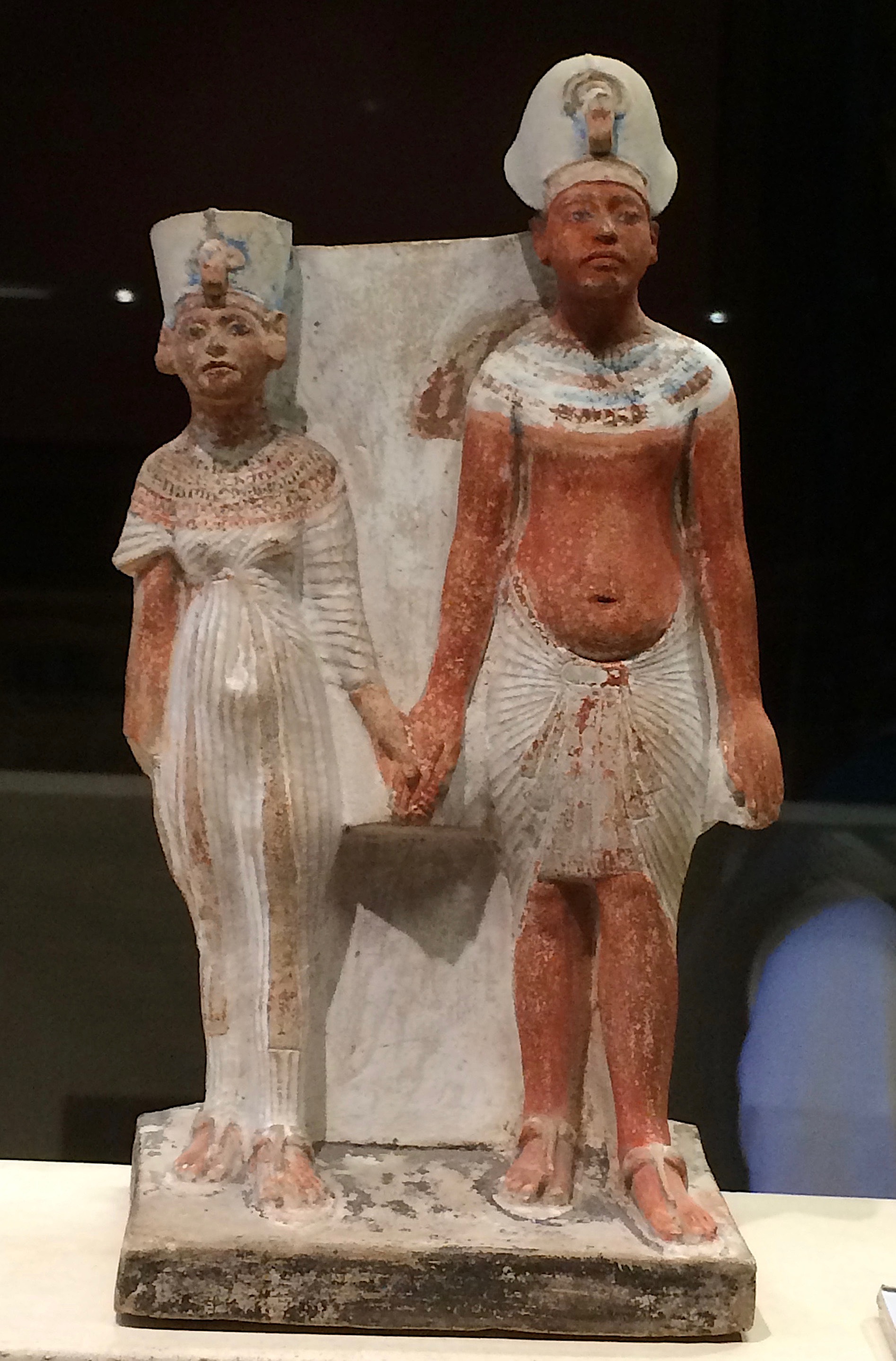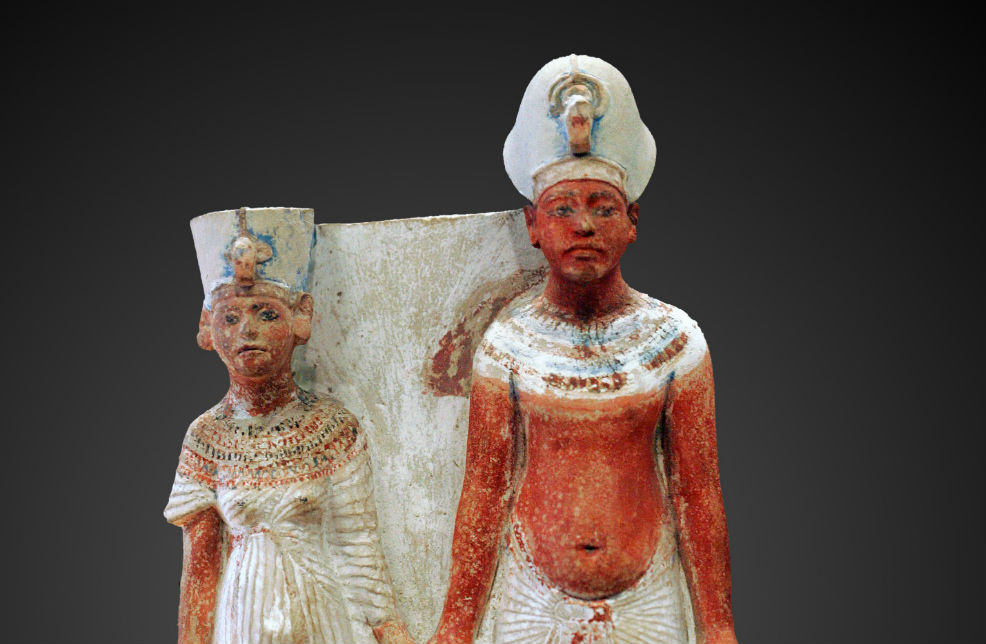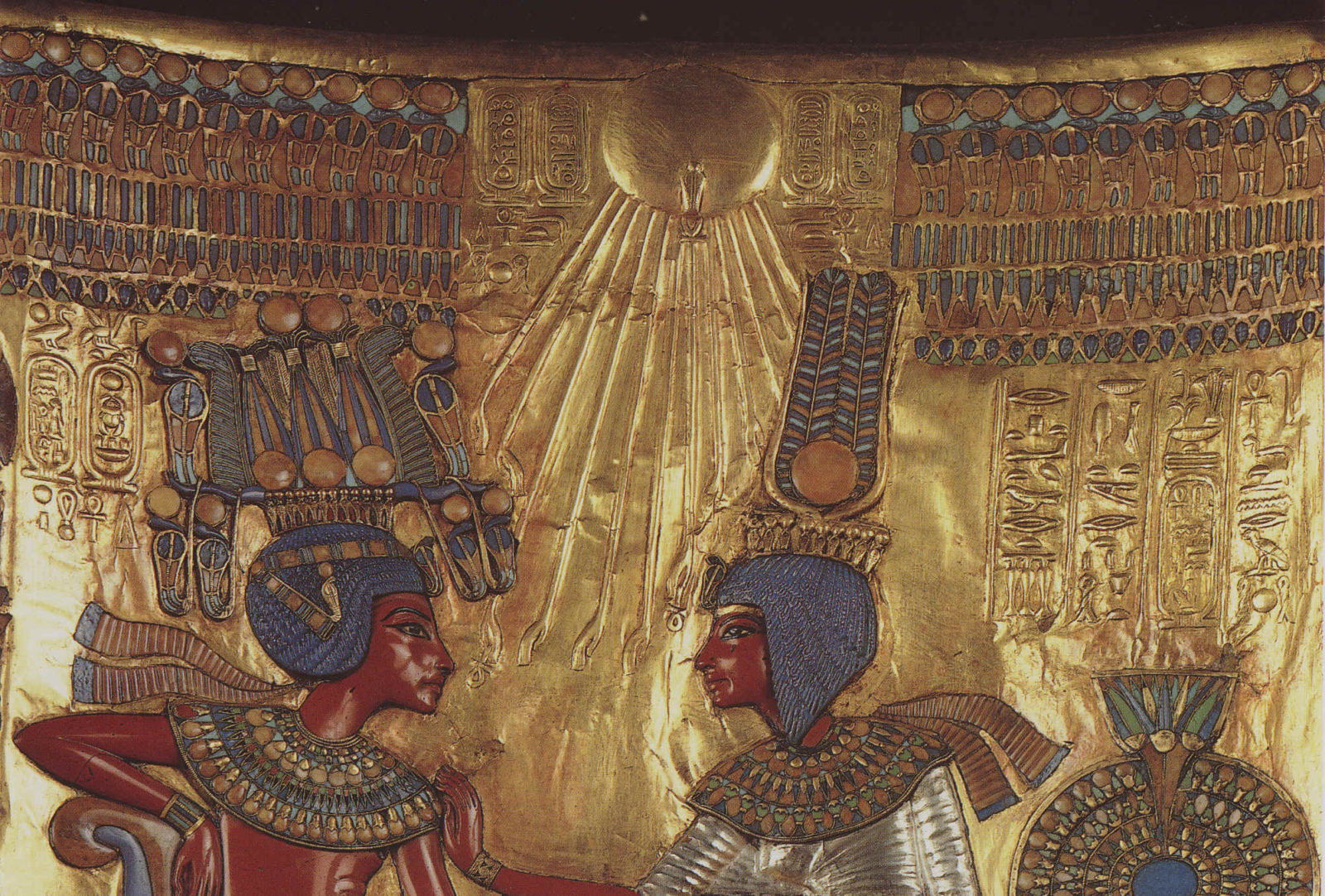
Nefertiti and Akhenaton Ancient egyptian gods, Egyptian goddess
One of the most mysterious and powerful women in ancient Egypt, Nefertiti was queen alongside Pharaoh Akhenaten from 1353 to 1336 B.C. and may have ruled the New Kingdom outright after her.

AkhenatoneNefertiti Esseniens
Ancient Egypt, 1352BCE. 15.7 cm 22.1 cm. Akhenaten and Nefertiti is an Ancient Egyptian Limestone Sculpture created in 1352BCE. It lives at the Brooklyn Museum in New York. The image is used according to Educational Fair Use, and tagged Portraits, Couples and Relief Sculpture. See Akhenaten and Nefertiti in the Kaleidoscope.

O ARQUÉTIPO DO CASAL IDEAL AKHENATÓN E NEFERTITI arquetipo
Published 3 Mar 2022, 13:51 GMT. This stunning bust of Nefertiti is perhaps the most famous image of the ancient queen, whom some scholars believe ruled as pharaoh after her husband's death. Photograph by Bpk, Scala, Florence. Nefertiti, great royal wife of Amenhotep IV (better known by the name he adopted later in life, Akhenaten), is one of.

with Akhenaten by Judith Page Nefertiti, Queen nefertiti, Egyptian kings
The City of Akhenaten and Nefertiti: Amarna and Its People, by Dr. Barry Kemp — Emeritus Professor of Egyptology at Cambridge University and the director of the Amarna Project — is undoubtedly the most comprehensive source on the mysterious ancient city of Tell el-Amarna, Egypt (known also the modern name of "Amarna"). Amarna was the former capital of the heretic pharaoh Akhenaten and.

Akhénaton et Néfertiti après 1345 avant J.C. (après l'an 9 du règne
O ARQUÉTIPO DO CASAL IDEAL - AKHENATÓN E NEFERTITI União e Propósito de VidaVídeo Novo sobre Arquétipos e o Inconsciente Coletivo. Junghttps://www.youtube.co. O ARQUÉTIPO DO CASAL IDEAL.

Akhenaten & Nefertiti (Illustration) World History Encyclopedia
by Dr. Steven Zucker and Dr. Beth Harris. Akhenaten, Nefertiti, and Three Daughters. Watch on. House Altar depicting Akhenaten, Nefertiti and Three of their Daughters, limestone, New Kingdom, Amarna period, 18th dynasty, c.1350 BCE (Ägyptisches Museum/Neues Museum, Staatliche Museen zu Berlin)

Akhenaton e Nefertiti 1355 a.C. circa, Nuovo Regno. Rilievo in
Relief of Akhenaten, Nefertiti, and their daughters. The 17-year reign of the pharaoh crowned as Amenhotep IV was one of the most revolutionary periods in Egyptian history. After the prosperous 39.

Nefertiti e Akhenaton o casal egípcio impossível de ser ignorado
O primeiro são as circunstâncias em que Akhenaton assumiu o poder: o trono estava destinado ao seu irmão mais velho, Tutmés, mas o herdeiro faleceu quando criança. Akhenaton, que na época chamava-se Amenhotep IV, virou o principal na linha de sucessão.

Nefertiti and Akhenaton by snowsowhite on deviantART Arte egípcia
O Arquétipo da Nefertiti Seu nome significa "A mais bela chegou", desse modo, já podemos compreender que o Arquétipo da Nefertiti é um grande símbolo de segurança e confiança, além de elevar a autoestima. A rainha Nefertiti governou o Nilo com seu marido Akhenaton, por isso, sua imagem traz uma conexão com um relacionamento estável e duradouro.

Portrait of Akhenaton and Nefertiti Stock Image C012/9419 Science
In keeping with the typical Amarna Period artistic conventions, both Akhenaten and Nefertiti are depicted with slightly distorted features and proportions, and both male and female figures display a similar body type. (c. 1345 BCE, after Regnal Year 9, on display in the Louvre Museum, Paris ). Remove Ads Advertisement About the Author

Akhenaton e Nefertiti o casal revolucionário. Blog Khan el Khalili
Nefertiti (flourished 14th century bce) queen of Egypt and wife of King Akhenaton (formerly Amenhotep IV; reigned c. 1353-36 bce ), who played a prominent role in the cult of the sun god known as the Aton. Akhenaton and Nefertiti under the sun god Aton

Akhenaton e Nefertiti Guia do Louvre
AP. An ancient bust of Queen Nefertiti on display in Berlin should be treated as looted Nazi art and returned to Egypt, a leading expert has said. The statue of the wife of the Egyptian pharaoh Akhenaten was taken from Egypt by Ludwig Borchardt, the German archaeologist who unearthed it, and is now displayed in the Berlin's Neues Museum.

Akhenaten and Nefertiti (avec images) Égypte antique, Civilisation
Relief of Queen Nefertiti. New Kingdom, Amarna Period. ca. 1353-1336 BC. On view at The Met Fifth Avenue in Gallery 122. Nefertiti, whose name means "the Beautiful One Is Here," was principal queen of Akhenaton. Like her mother-in-law Queen Tiye, Nefertiti was a powerful figure in the court. She is frequently shown participating in religious.

Nefertiti et Akhenaton Néfertiti, Costume égyptien, Art égyptien
Nefertiti (/ ˌ n ɛ f ər ˈ t iː t i /) (c. 1370 - c. 1330 BC) was a queen of the 18th Dynasty of Ancient Egypt, the great royal wife of Pharaoh Akhenaten.Nefertiti and her husband were known for their radical overhaul of state religious policy, in which they promoted the earliest known form of monotheism, Atenism, centered on the sun disc and its direct connection to the royal household.

010_nefertitietakhenaton_theredlist Gnostic Muse
Nefertiti (c. 1370 BCE-c. 1336 or 1334 BCE) was an Egyptian queen, the chief wife of Pharaoh Amenhotep IV, also known as Akhenaten. She is perhaps best known for her appearance in Egyptian art, especially the famous bust discovered in 1912 at Amarna (known as the Berlin Bust), along with her role in the religious revolution centering on monotheistic worship of the sun disk Aten.

ATIVANDO ARQUÉTIPO DO CASAL AKHENATON E NEFERTITI COM HO'OPONOPONO
Akhenaten, Nefertiti & Aten: From Many Gods to One. The reign of King Akhenaten stands out in ancient Egyptian history for artistic innovation, the creation of a new religious capital and intrigue surrounding royal succession. Above all, though Akhenaten is known for his development of a kind of early monotheism that stressed the uniqueness of.